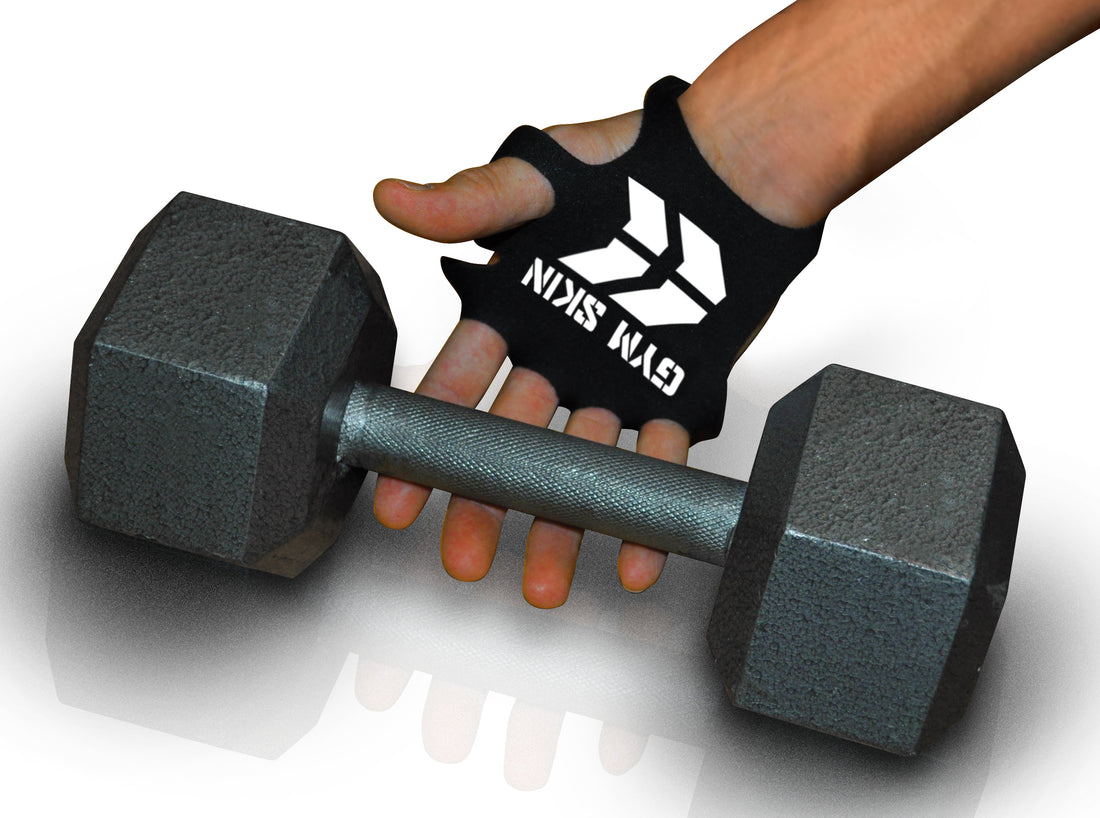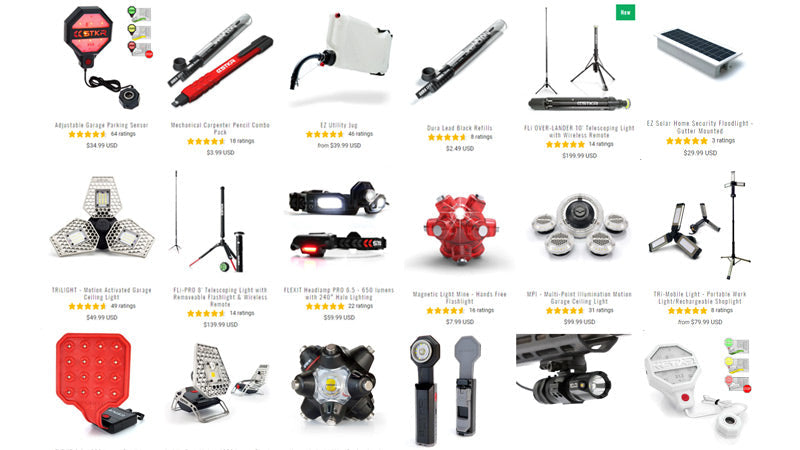
How Should I Protect My Hands When Lifting Weights?
Share
The expression no pain, no gain is thrown around in the gym like rice at a wedding.
However, not all types of gym pain needs to be tolerated. Lifting weights, for example, come with threats of hand damage and whatnot, but it can easily be prevented.
To protect your hands when lifting weights, the best thing to do is wear protective gear like weightlifting gloves or palm protectors. Make sure that your hands experience less friction. Allow it to sustain moisture consistently.
If lifting dumbbells, barbells, kettlebells, and other weights cause unnatural effects in your hands, it’s time to check on how safe your gym routine is.
Read on and find out how you can protect your hands from damages caused by weightlifting.
Can Lifting Weights Damage Your Hands?
Yes, weightlifting can cause some damage to your hands. However, the severity of such damage depends on how cautious you are when lifting weights.
At the very least, your hand can go through common skin problems, especially if there is direct friction between your palm and the weights you are using.
Fatigue is also prevalent, along with minor injuries that could stretch to your arms.
Furthermore, other health damages are also affecting your hands when you lift weights.
-
Hand and Wrist Pain
A tight grip on heavyweights like a barbell or a kettlebell can strain your hand and wrist.
Put in the prolonged hours of lifting these weights, and you open yourself to the likelihood of pain. Not to mention the bulkiness of these gym weights.
Beginners often experience hand and wrist pain as they tend to overdo their workout.
Likewise, there’s the prevalence of pushing yourself to the limit, which some translate as lifting heavy weights beyond their capacity.
These unchecked routines cause too much pressure to different parts of the body, most especially the hands.
-
Calluses
If you’re new to weightlifting, one thing you can expect after a few sessions are hand calluses. It’s pretty normal and reasonably expected.
Calluses are layers of dead hardened skin that build up on your palms. They form as a result of stress and trauma through constant friction.
Some weightlifters consider their calluses as a badge of honor of some sort. They claim that having calluses in your hands allows safer weightlifting exercises. But many see calluses as an indicator of weak grip.
In reality, however, having calluses can lead to further skin damage. It leads you closer to infections, painful stings and burns, and a higher risk for injuries.
-
Nerve Damage
Lifting weights doesn’t only put pressure on your palms. It also wears out the nerves in your wrist.
The condition called proximal radial neuropathy is often linked to weightlifting. It is caused by excessive pressure that radiates from the wrist to the arm.
In weightlifting, this type of nerve damage is classified as an injury suggesting that you have been lifting weights with improper grip and form.
Another nerve exposed to potential injury when weightlifting is the ulnar nerve.
The condition known as ulnar neuropathy is a result of prolonged stretching of the elbow. Nonetheless, the pain extends on the arm and the wrist.
-
Bacterial Infection
If you have sweaty hands and you’re in constant contact with metallic gym equipment passed around within the facility, your chances of a skin infection increase. Even so, when you sustain a wound on your hand while lifting weights.
Cellulitis is a skin condition common among weightlifters and bodybuilders. It occurs when bacteria enter even through a small wound that leads to inflammation. Injuries can cause these small breaks during weightlifting.
Blisters characterize the skin damage. The condition worsens when these blisters are undrained and abscesses are formed.
Furthermore, skin contamination increases the risks for other complicated diseases such as tetanus infection.
-
Trigger Finger
Another condition that commonly occurs in weightlifters is the trigger finger. It happens when the thumb or other fingers are subjected to repetitive movement.
It can also be due to persistent pressure, which is brought by lifting heavy weights, especially with repeated gripping.
Trigger finger is characterized by stiffness, swelling, and pain. In addition, the affected finger often locks when bent as the tendons and muscles become inflamed. There’s also a popping sensation whenever it is moved.
Once you develop a trigger finger, it becomes too difficult and too painful to work out or lift weights.
Fortunately, there are several ways to avoid this condition and relieve the pain. One of which is wearing weightlifting gloves.
How To Protect Hands When Lifting Weights?
When it comes to lifting weights, safety should be an utmost priority. Luckily, there are practical ways to protect your hands from the damages mentioned earlier in this strenuous workout.
-
Wear Weightlifting Gloves
If there’s one gym gear that could save you from hand damage and pain, that would be a pair of reliable weightlifting gloves.
That’s why it’s not surprising to witness bodybuilders, professional athletes, and weightlifters wearing gloves when doing their routine.
However, choosing suitable weightlifting gloves is crucial to ensure that you get the best protection for your hands.
There are several requirements in choosing your weightlifting gloves.
- It should fit your hands well.
- The protective layer should be comfortable.
- It should be breathable and stretchable.
If you’re looking for weightlifting gloves that satisfy these basic requirements and more, then you can never go wrong with Gym Skins. They’re stylish and effectively prevent blistering and other damages caused by lifting weights.
Tough Skin and Sport Skin are two other palm protector variations we offer. They fit well with strenuous activities outside the gym as well, such as rock climbing, kayaking, and construction-related tasks.
So, instead of enduring the skin and nerve damages of weightlifting to your hands, choose to wear the best gym gloves for your protection.
-
Moisturize Regularly
The constant friction between your palms and the bars you lift can suck the moisture out of your hands. This is why the term “gym hands” was associated with dry and calloused hands.
Although, the chances of having this condition lowers when you wear weightlifting gloves. Still, it is best to ensure that you include moisturizing your hands in your gym routine.
Use hand lotion regularly. If you’re wearing gloves, you can apply some cream or moisturizer before working out.
Find time within the day to soak your hands in warm water within 15 to 20 minutes. This can remove the dead cells on your palms.
-
Warm-Up and Stretch Before Weightlifting
Before picking up a couple of dumbbells or other weights, ensure you have done a proper warm-up. It is no secret that performing warm-up exercises prevents muscle strains.
Like any part of your body exposed to thorough training, your hands and arms need to be fueled before the actual weightlifting.
A standard inclusion in warming up is stretching. As you go further into the training, you’ll learn other exercises such as band dislocations and band pull-apart.
What To Wear on Hands When Lifting Weights?
When lifting weights, always wear your weightlifting gloves or palm protectors. That’s practically common knowledge in the gym.
The most trusted weightlifting gloves provide maximum protection against bacterial infection as it creates a barrier between your palms and the equipment handle.
Furthermore, these gloves relieve the pressure that comes with lifting heavy weights lowering your risks of nerve damage and pain radiating from the hands to the wrists.
Aside from keeping your hands away from critical damages, weightlifting gloves are also known to enhance performance.
Professional weightlifters and athletes wear gloves to gain muscle support from the padding, which allows them to lift the weights smoother.
Summary
It is often said that the stings and burns are part of weightlifting.
But why suffer when you can do the deed without the excruciating pain. The weights are enough hurdle already. You don’t have to be a martyr and endure the blisters and calluses.
Take the necessary measures to protect your hands.
- Make sure your skin isn’t dry and hardened by dead cells.
- Practice proper warm-up and stretching to avoid injuries.
- Wear nicely fitted gloves or palm protectors made of comfortable and breathable materials.



